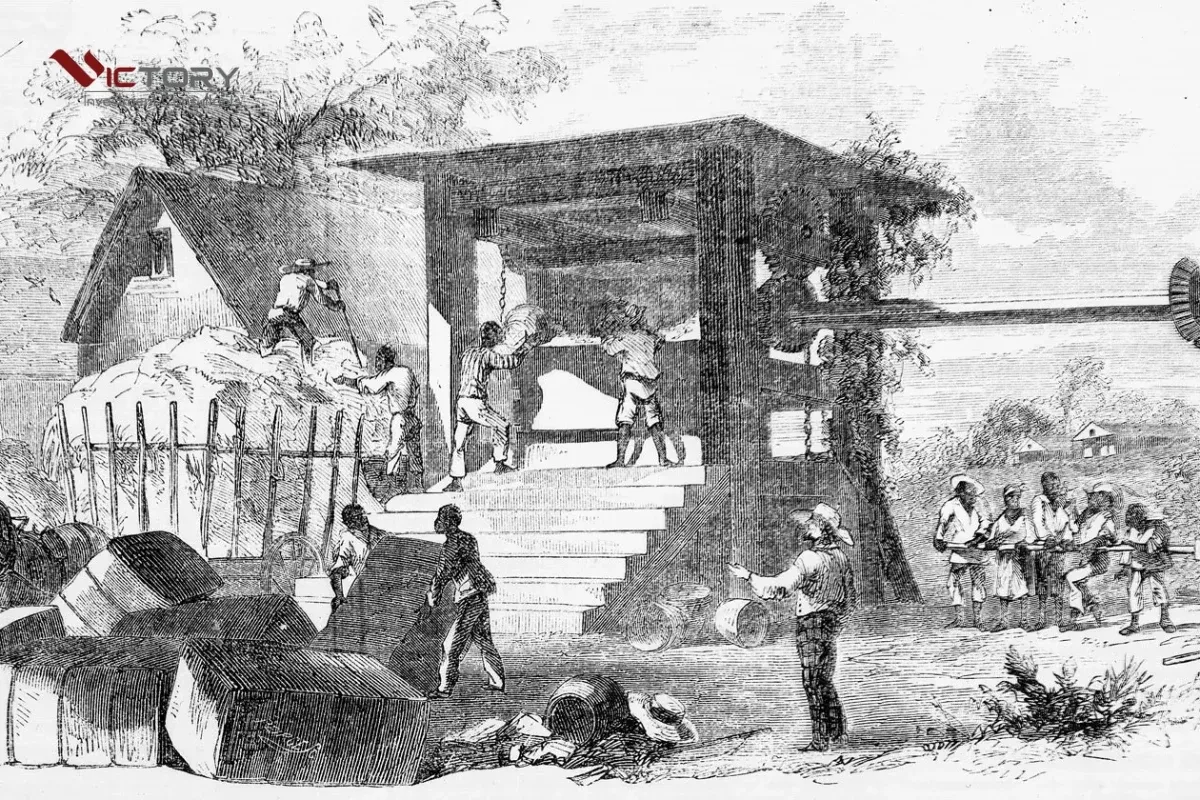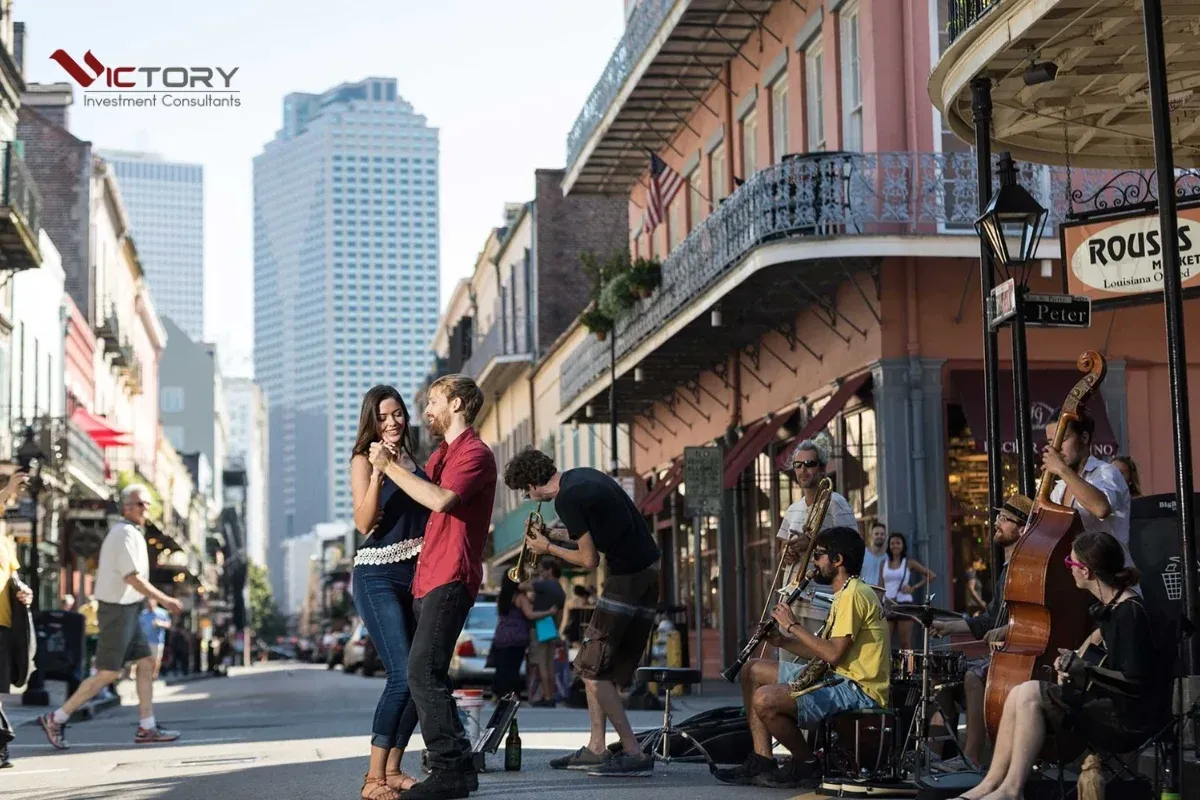Louisiana, often referred to as a “Little Europe” in the heart of America, is a treasure trove of unique culture, history, and cuisine. Formerly a colony of France and Spain, Louisiana retains a strong European heritage, particularly French culture, reflected in the architecture of the French Quarter in New Orleans and the distinctive flavors of Gumbo.
This article will take you on a journey to explore the deep-rooted French culture within Louisiana, from historical landmarks, architecture, music to cuisine and festivals, helping you better understand the unique cultural blend in this region.
French History Marks in Louisiana
From Colony to U.S. State
Louisiana’s history is closely tied to France from the 17th century, when French explorer Robert de La Salle claimed the region and named it Louisiana in honor of King Louis XIV. New Orleans, the largest city in the state, was founded in 1718 and quickly became an important economic and cultural center of the French colony.
In 1762, France secretly ceded Louisiana to Spain. However, in 1800, Napoleon Bonaparte regained control. Three years later, in 1803, Napoleon sold Louisiana to the United States in the “Louisiana Purchase,” a pivotal event that expanded U.S. territory westward. Despite being part of the United States, Louisiana retains many French cultural elements, creating a distinct identity.
French Cultural Influence Today
The French presence in Louisiana’s history has left a lasting impact, influencing various aspects of local life and culture.
- Language: Although English is the official language, French is still spoken by some residents, especially in the Cajun region.
- Architecture: The French Quarter in New Orleans is the clearest evidence of French architectural influence, with cobblestone streets, intricate wrought-iron balconies, and colonial-style buildings.
- Law: The Louisiana legal system is influenced by French civil law (Napoleonic Code), differing from the common law system prevalent in other U.S. states.

The French Quarter in New Orleans showcases a profound French architectural influence. Alt: The French Quarter with ornate wrought-iron balconies and ancient French architecture, emblematic of New Orleans, Louisiana.
Unique French Architecture in Louisiana
French Quarter – The Jewel of New Orleans
The French Quarter, also known as Vieux Carré, is the historic heart of New Orleans and one of the city’s most famous tourist attractions. It preserves the colonial French and Spanish architecture of the 18th and 19th centuries nearly intact.
The homes with elaborate wrought-iron balconies, narrow cobblestone streets, and lush courtyards create a charming ambiance, transporting visitors back in time. Tourists can easily spot distinct architecture like:
- Pontalba Buildings: Two rows of buildings opposite each other on Jackson Square, built in the 1850s, exemplifying French Neoclassical architecture.
- St. Louis Cathedral: A historic church with Gothic Revival architecture, one of New Orleans’ most important religious symbols.
Cajun Architecture – A Cultural Fusion
Beyond the French Quarter, Cajun architecture is an important part of French architectural heritage in Louisiana. Traditional Cajun homes are often built with wood, featuring sloping roofs and wide porches, reflecting adaptation to the region’s warm and humid climate. This architectural style is a blend of French, Spanish construction techniques, and Native American influences.
Louisiana Cuisine – A Symphony of French Flavors
Gumbo – A Symbolic Soup
Louisiana cuisine is a harmonious blend of French, Spanish, African, and Caribbean flavors. Gumbo, a signature soup, is a prime example of this mix. Gumbo originated from the French bouillabaisse but was adapted with local ingredients like seafood, chicken, andouille sausage, and vegetables.
Jambalaya – A Flavorful Rice Dish
Jambalaya is a mixed rice dish akin to Spanish paella but imbued with distinct Louisiana flavors. The dish typically includes rice, chicken, sausage, seafood, and vegetables, spiced with characteristic Cajun seasoning.
Beignets – Sweet and Delightful Pastries
Beignets are sweet pastries with French origins, beloved in New Orleans. The square-shaped, hole-free pastries are fried to golden perfection and dusted with a thick layer of powdered sugar. Visitors can enjoy hot beignets at Café Du Monde, a renowned café operating since 1862.

Louisiana Music – The Birthplace of Jazz
Jazz – A World Heritage
Louisiana, particularly New Orleans, is considered the birthplace of jazz, a unique musical genre combining blues, ragtime, and European music. Jazz emerged in the late 19th and early 20th centuries, reflecting the cultural blend between African Americans, French and other communities in New Orleans.
Other Musical Genres
Besides jazz, Louisiana is the cradle of many other music genres like blues, zydeco, and Cajun.
- Blues: Originating in the African American community in the Mississippi Delta, blues music reflects their hardships and sorrows.
- Zydeco: Zydeco music combines Cajun music and blues, using instruments like accordion, washboard, and guitar.
- Cajun: Cajun music, rooted in the Acadian French community, employs instruments like violin, accordion, and guitar.
Mardi Gras Festival – A Vibrant Parade
The Largest Celebration of the Year
Mardi Gras, also known as “Fat Tuesday,” is the largest and most famous festival in Louisiana, held annually in early spring. This festival has roots in European Catholic pre-Lenten celebrations.
Parades and Costume Parties
Mardi Gras in New Orleans features a series of lively parades, costumes, and parties. The parades often include lavishly decorated floats, marching bands, and colorfully dressed participants. Parade-goers typically toss items like beads, toys, and coins to the spectators.

Conclusion
Exploring French culture in Louisiana is a captivating journey, helping you understand the unique cultural blend in this region. From the architecture of the French Quarter in New Orleans to the distinctive flavors of Cajun cuisine, from lively jazz music to colorful Mardi Gras festivals, Louisiana offers diverse and enriching cultural experiences. If you have the opportunity to visit Louisiana, don’t miss the chance to explore these distinctive features and gain a deeper appreciation of French cultural heritage within the United States.